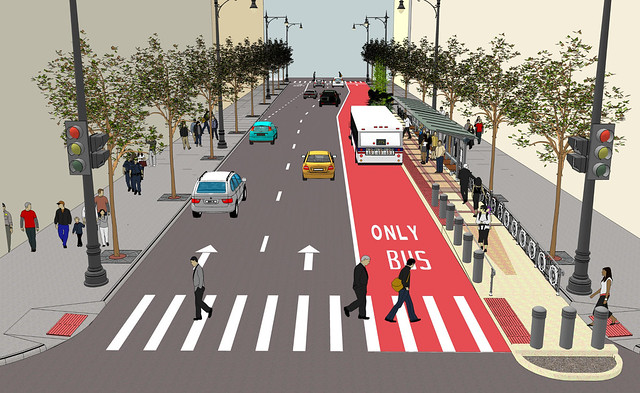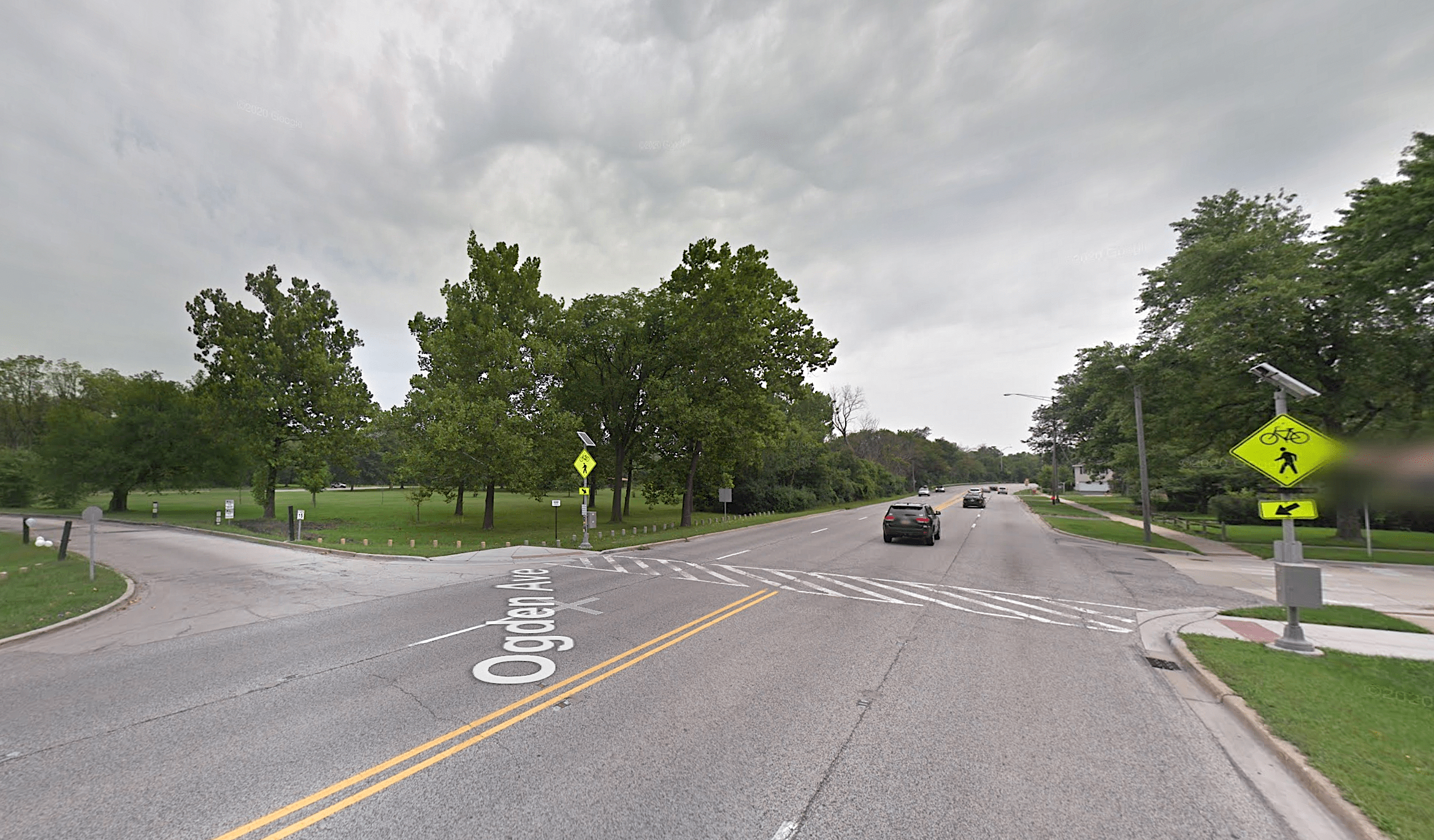
Yesterday Blue Cross spokesman Michael Deering told me about how the Central Loop Bus Rapid Transit project will make it faster and easier for hundreds of the corporation’s employees to access it downtown headquarters. This morning I spoke with Peter Vilim, co-chair of the real estate investment firm Waterton Associates, about why his company supports BRT.
Waterton owns 56 buildings, including many rental properties and nine hotels, located in transit-friendly locations near city centers across the country. In Chicago, the company owns 4,500 apartments, including the four high rises of the Presidential Towers development, which sit kitty-corner from the Ogilvie Transportation Center.
John Greenfield: Why is Waterton supporting BRT?
Peter Vilim: We’re partisans for BRT because high-density urban housing is our specialty. All of our Chicago buildings are clustered around the Loop and the Near North Side. The Loop BRT will literally run past two or three of our properties, including Presidential Towers, which has about 2,400 apartments. But the whole BRT concept is good, including Ashland and beyond.
We have roughly 10,000 residents in the city of Chicago, and no more than 30 percent of them have cars. They mostly get around on foot, on transit and by bicycle -- that’s a preference. They could live in the suburbs and own cars, but they want to live downtown near their jobs and where the action is and do something with their time other than driving home. Networking with transit is a big benefit of living in and around the downtown core.
The current BRT plan represents what I call the “Europeanization” of America. Any comparable city in Europe has a fixed-rail tram system. During the time the U.S. was building highways, Europe was building rails. We had streetcars in Chicago but we tore up the tracks during the last century. The dominance of the automobile in the U.S. suppressed our ability to expand mass transit. The result is an overburdened transportation system where it’s difficult to move anything through a city during rush hour.
It may be too late to lay new tracks in the city of Chicago, but BRT is the next best thing. In fact, it may be better than [fixed-rail transit] because it’s more flexible. If you have an event like a parade or, God forbid, we should win the World Series, it’s easy to ramp up service by adding buses. As new population centers emerge, like the increase in development in the South Loop, you can respond by adding new BRT routes and stations relatively cheaply. The buses can be run on clean fuel.
The main thing we have to overcome is our love and dependence on the automobile. We’ll have to become aware that there will come a day when it won’t be possible to drive a car into the Loop. Rather than fighting a losing battle against that, we ought to embrace it. BRT can be one of the most efficient and ecologically sound ways to move people through a city.
JG: Anything else you want to tell me about the issue?
PV: Chicago’s BRT plan is pretty well thought out. BRT works in other cities, so it’s not like we’re inventing anything new, we’re just adopting the latest technology in an area that can definitely benefit from it.
JG: I must say, I’m impressed by your grasp of transportation issues.
PV: I’ve been in the real estate business for 30 years and the focus has reverted to the urban core. Most of our properties are at or near a transit node. People want to be somewhere they can easily hop on a train or bus. This is where the world is today, so I’ve had to learn it as I’ve gone along.





